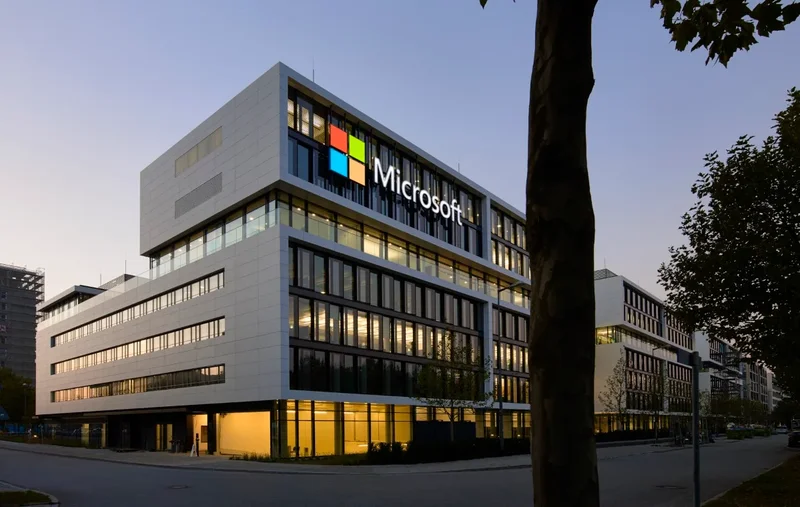So, Microsoft is rolling out a new Start menu for Windows 11. Groundbreaking. They’ve “rebuilt it from the ground up” for “better customizability.” I can almost hear the marketing team high-fiving in a conference room somewhere in Redmond. They’re giving you the incredible, revolutionary ability to... hide the recommended apps. Wow.
Let’s be real. This is the tech equivalent of a landlord slapping a new coat of beige paint on a leaky apartment and calling it a luxury renovation. I’m supposed to be excited that the “all apps” list is now on the main page and can be sorted into categories like an iPhone? Give me a break. I’m a grown adult using a powerful computer, not a toddler who needs his apps sorted into colorful buckets. The best part? The update, KB5067036, is rolling out in waves, so you get the privilege of waiting for a feature you never asked for. Microsoft begins rolling out new Start menu on Windows 11 — here's everything you should know.
And here’s the kicker, the line that perfectly sums up the modern tech experience: "Can I turn off the new Start menu? No." Offcourse not. You will take your new, more “dynamic” and “adaptive” interface, and you will like it. It’s the illusion of choice, a masterclass in corporate gaslighting. They give you a toggle to “Get the latest updates as soon as they’re available” as if you’re an eager kid on Christmas morning, but they remove the one toggle that actually matters: “Leave my stuff alone.”
This new Start menu is a joke. No, 'joke' is too light—it's an insult. It’s a beautifully crafted piece of misdirection, a shiny object dangled in front of our faces to keep us busy arguing about icon placement and taskbar animations.
Forget the Paint Job, Look at the Plumbing
While we’re all supposed to be debating the merits of a grid list versus a category view, Microsoft is playing a completely different game. On Wednesday, they’re going to announce their Q1 earnings, and Wall Street is expecting them to report revenue of over $75 billion. For one quarter. The company just casually breezed past a $4 trillion market cap, a number so vast it’s practically an abstraction. When does Microsoft report earnings on Wednesday? Here's how to tune in.
How? It sure as hell ain’t because of the Start menu.

The real story is in the plumbing. It’s in Azure, the cloud unit that’s pulling in over $75 billion a year. It’s in the frantic, world-spanning race to build AI data centers. They’re dropping a cool $80 billion on AI this year alone. According to their own earnings calls, they literally cannot build servers fast enough to meet the demand from customers. They’re so “constrained” that it’s impacting the business.
This is the kind of problem you dream of having. It's like an arms dealer saying he’s struggling because he can’t manufacture bullets fast enough to sell to both sides of the war. When a company says it "can't meet demand" while simultaneously reporting a 39% rise in sales, are they failing, or are they just creating artificial scarcity to drive prices and urgency up? What do you think?
Microsoft is no longer a software company that sells you Windows and Office. That’s just the glossy casino floor, full of flashing lights and rearranged slot machines to keep us occupied. The real business is in the back room, where they’re building the infrastructure that prints the money. They are becoming a utility—the electricity company for artificial intelligence. We’re all just tenants in their world, and the Start menu is the complimentary mint on the pillow.
The OpenAI Checkmate
If you need any more proof of where the real game is, look at the OpenAI deal. While we were getting a new battery icon on our taskbar, Microsoft was busy structuring a deal to let OpenAI go public at a $500 billion valuation. Microsoft’s slice of that pie? A cool $135 billion stake.
They don’t just have a partnership with the most important AI company on the planet; they effectively own its future. They’ve locked in the source code of the 21st century’s gold rush. They provide the picks and shovels (Azure servers) and own a massive chunk of the biggest gold mine (OpenAI). It’s a vertically integrated monopoly in the making, and it’s happening right under our noses.
So they're spending $80 billion on AI infrastructure, but they can't give us a simple option to revert to a Start menu we actually like? What does that tell you about their priorities? It tells me they don’t care about what you want. They care about what you need. And they’re making damn sure that in the near future, what you’ll need is their AI, running on their cloud, billed to your credit card. The user interface is just the candy shell on the bitter pill of subscription dependency. Then again, maybe I'm the crazy one here. Maybe a more adaptive Phone Link panel really is what matters.
Don't Look at the Start Menu
This isn't about user experience anymore; it's about user capture. They're not building a better operating system for you. They're building a better customer for them. We're arguing over the color of the drapes while they're rebuilding the foundation of the entire house to make sure we can never, ever leave.
